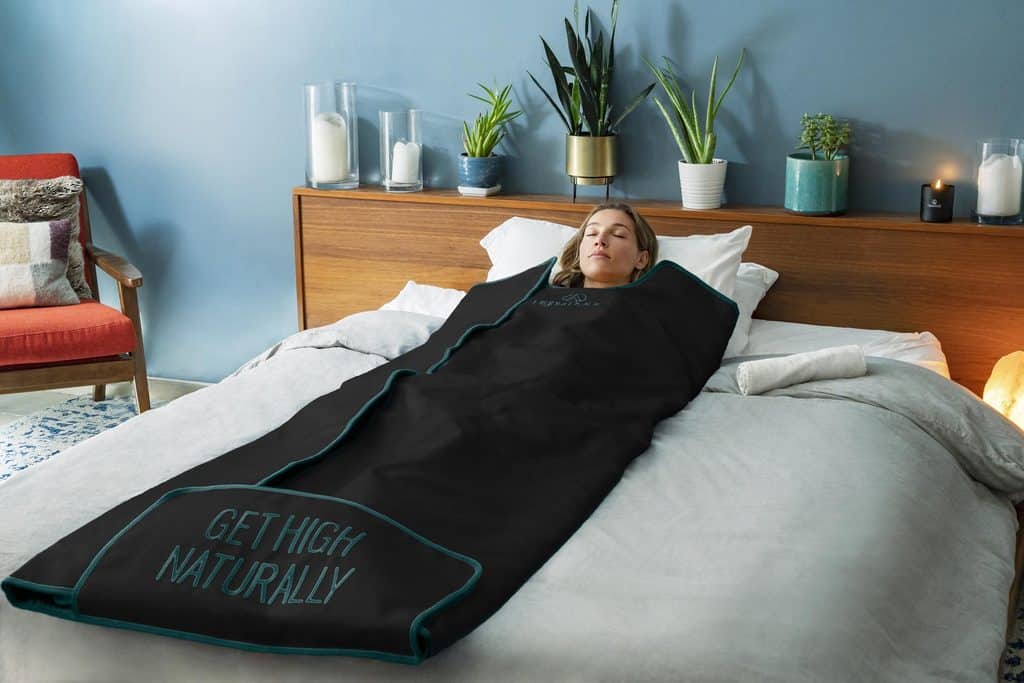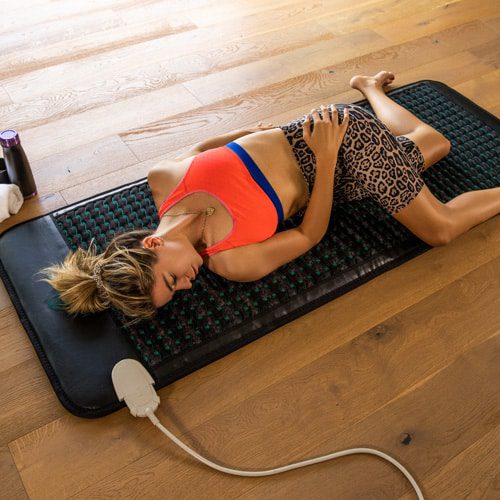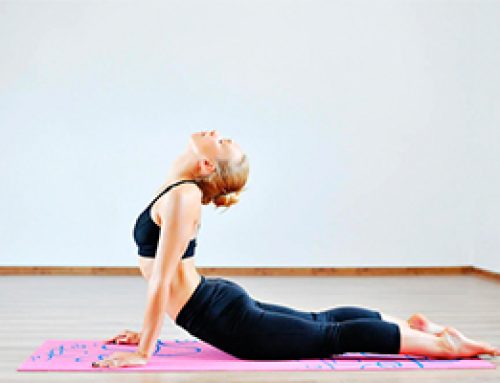Sick of Being Stuck is reader-supported. When you buy through links on my site, I may earn a commission. Disclosure.

Among all the health itineraries out there, home saunas are becoming very on-trend these days. It’s understandable, as the design and technological advancement of home saunas continue to improve. It’s much simpler to install one in your home today with simple DIY home sauna kits available.
Back then, installing a sauna at home was something that only the rich and famous could afford, but today as technology has progressed, home saunas are very much affordable. In this article, I’ll explain to you about home saunas, their history, the benefits, and everything in between.
The History of Saunas
Sauna is a contemporary term used to describe any heating system intended to create profuse sweating. Sauna is the only word in the English dictionary with its roots in the Finnish language. ‘Sauna’ (pronounced: saw-na) means bathhouse in Finnish.
The first saunas were man-made caves that were draped closed with animal skins and had a fire burning inside them during the day beneath a pile of stones. After the fire was extinguished and the smoke wafted out, the stones would continue to warm the cave long into the night for the people who huddled inside and basked in the steam that rose from the stones when water was poured on them.
Africans are also among the oldest sauna users. Tribal medicine leaders dug holes in the ground, roughly the size of a grave, to comfortably fit the human body and built a fire inside the hole. As the fire turned to hot coals, poles were laid over the opening of the area to create a bed-like structure.
The patient suffering from infectious disease was placed on the bed of poles elevated three feet above the hot coals and kept there until profuse sweating occurred. The purification process through perspiration was successful at ridding patients of many diseases.
The history of the sauna in itself is a long story that will need a dedicated article. For now, understand that saunas have been utilized from the start of human civilization.
What Are at Home Saunas?
Home saunas are small interior spaces that are fitted with a heat source to create a hot, steamy environment to relax, unwind and relieve muscle pain. A sauna works by using the dry heat generated by a heater in a small enclosed space.
Home saunas can be traditional Finnish saunas or portable infrared saunas. For a traditional Finnish sauna, you need traditional rocks. A portable home sauna uses electricity as a heat source and can be used anywhere.
A home sauna gives you easy access to sweat without going to the spa or gym. You can add a home sauna to the existing space in your home or install it outside. The drawback of home saunas is that they are expensive and steam saunas carry a mold and mildew risk. Saunas can also take up valuable space in your home, whether in a bathroom or outdoors.
The Benefits of Using a Sauna at Home
For most Americans, a sauna is just the heated wooden closet hidden in the corner of the locker room at your local gym. But spend any amount of time in Finland and you’ll realize that a sauna is probably the most under-utilized feature the gym has to offer.
There’s a lot of research to back up the health benefits of using a sauna. Here are 10 health benefits of saunas you should know about—and why you should spend more time in them.
- Improve Blood Circulation
Proper blood circulation is vital for body function. The heat from the sauna causes your heart to beat faster and your blood vessels to widen. When your blood vessels are wide, it allows more blood to flow in the body freely.
Better blood circulation helps to minimize muscle soreness, improve joint movement, helps arthritis, and increases mobility.
- Reduce the Risk of Cardiovascular Disease
What is the first thing you notice as soon as you start exercising? You experience an increased heart rate. When you are in a sauna you get the same increased heart rate plus better blood circulation. As we all know, exercise reduces the risk of cardiovascular diseases by keeping our heart cells in better condition. Similar to exercise, a sauna also helps to reduce the risk of cardiovascular diseases.
While a sauna shouldn’t be used in place of a healthy exercise regime, it certainly can supplement it and keep the risk of cardiovascular disease down.
- Weight Loss With Sauna
When you’re in a sauna, your body’s metabolism speeds up in a similar way as it does when you exercise. As a rule of thumb, the faster your metabolism, the faster you lose weight. Spending 20 minutes in a sauna can help you burn up to 500 calories.
- Helps To Detox
Sweating is the best way to detoxify your body. With the help of a sauna, you can flush out heavy metal elements such as lead, arsenic, and cadmium deep from your skin and body.
- Sauna Is an Indirect Stress Reliever
Exercise, spending time with friends and family, and relaxing are some simple ways to fight stress. A sauna is a combo pack when it comes to stress-relieving, you get the time to relax, an opportunity to socialize when you’re in a group and gives the same effect as exercise.
While I am spending my 30-60 minutes in the sauna I like to listen to music or a relaxing meditation to help me make it a nice long session.
- Pain Relief
One study in the Journal of Alternative and Complementary Medicine examined that saunas can help relieve body pain, frequent headaches, and migraines. Installing a home sauna can be one of the best investments if you’re suffering from chronic headaches or body pain.
- Improved Immunity
Saunas not only help improve blood circulation and increase heart rate but also increase white blood cell counts, a marker for immune strength. Exercise and sauna use is the best remedy to stay healthy and improve the immune system.
- Boost Mental Health
Anytime you can escape the world for a moment of peace and quiet, it’s going to have a positive effect on your mental health. If you choose to use a sauna don’t go in with any judgments or expectations. You won’t become a new person in one day and the benefits may hardly be noticeable at first for some, but over time, they can have a real impact on your mental health.
- Lower cholesterol
One study published in the International Journal of Occupational Medicine and Environmental Health found that when subjects used a sauna every other day for 20 days, they decreased their total cholesterol levels. The researchers concluded that the sauna offered cholesterol benefits similar to what could be expected from moderate-intensity physical exercise.
- Workout Recovery
Infrared saunas can penetrate the neuromuscular system and promote faster exercise recovery. One study published in the Journal of Human Kinetics found that sitting in the sauna for 30 minutes increases women’s levels of human growth hormone (HGH), which helps bodies break down fats and build muscle. Just make sure to rehydrate after the session.
Types of Saunas You Can Use at Home
The home sauna comes in different sizes, shapes, and useability. If you’re ready to relax and rejuvenate, here are the top home saunas in the market.
- Portable Saunas – If you’re looking for an economical and easy-to-use home sauna, a portable sauna is for you. This sauna gives you the same benefits as a traditional sauna, it improves circulation, increases cardiovascular activity, and improves stress and overall health. Portable saunas come in different shapes and sizes so make sure to do quick research to make sure you get the right portable home sauna for you.
- Infrared Sauna – An infrared sauna is a wooden box equipped with infrared heaters that are designed to detoxify and heal the body, boost mood, and more. Unlike traditional saunas that feature steam or dry heat to warm a room, infrared saunas use infrared heat lamps in confined spaces to raise body temperature directly.
- Portable Infrared Sauna – Portable infrared saunas use light to create heat and can be used anywhere. It works the same way as a regular infrared sauna would. Having a portable infrared home sauna is like having healing light in your pocket, ready to be used any time you need those soothing sensations and benefits. My favorite is the sauna blanket so you can lie flat and comfortably (and it’s infrared).
Click to see pricing at HigherDose.
- Portable Steam Sauna – A portable steam sauna is a little different from an infrared sauna and might not fit into all people’s choices. The big difference is in the type of heat that it provides. An infrared sauna uses light to create heat whereas a steam sauna uses steam from boiling water to create heat.
- Electric Sauna – Electric saunas are another type of trending home sauna. As the name suggests, an electric sauna uses electricity to generate heat. They are easily installed and there is no need for a smoke chimney. They also have relatively short safety distances, which makes the installation easier. Electric sauna heaters have heating elements that heat up the sauna stones. On the sauna stones, water is supposed to be poured to create steam. The hotter stones there are, the more steam you will get.
- Outdoor Sauna – If you’re planning for an at-home sauna, an outdoor sauna might be your best option. It provides a calming and restful place to be where you can relax your body. An outdoor home sauna is best to prefer during the cold weather, as it offers a place to stay warm. Since many outdoor saunas are also designed to be a pool house, you can own both in one unit. This can help take care of your pool needs in the summer while providing you with the use of a sauna year-round.
- Sauna Suit – A sauna suit is another way to use a sauna. The best part about a sauna suit is it can be used and carried anywhere. The suit works by trapping the body’s heat to elevate body temperature. The body reacts by releasing perspiration to cool down. During a workout, a person’s body temperature elevates. A sauna suit keeps the body temperature higher, prevents heat from escaping, and essentially provides a shell of warmth in cold weather.
There is currently a wide variety of prefabricated sauna kits available today, and many options where type and size are concerned. There are also several types from which to choose. Where you install your sauna will most likely depend on the amount of space you have, and how much of it you can devote. You have two basic options when doing so, an indoor sauna, or an outdoor sauna.
Detox Your Body at Home With a Sauna
The use of a home sauna is not only limited to sweating and better blood flow. Sauna comes with a lot of advantages, it can help detoxify your body, help your body to secrete endorphins, which are the “feel-good” chemicals in your brain, and much more.
How To Sauna Detox?
If you’re using a home sauna for the first time, here’s what you need to do.
- Step 1: Hydrate – During a sauna session, you’ll sweat a lot. Make sure to drink enough water on the day you plan to have a sauna session. And also don’t forget to hydrate after the session too.
- Step 2: Set Time Limits – Once you get yourself hydrated, set up your home sauna and set the timer. Time limit is important because if you’re a beginner you should figure out your body heat tolerance. To start the sauna, set your time limit to 10-15 minute sessions every day and gradually up the session to 40 minutes depending on your body tolerance.
- Step 3: Find a Comfortable Temperature – Temperature is another important factor to keep in mind. You don’t want to burn yourself at your first home sauna session. The best temperature for a sauna session is between 100°F and 130°F. Depending on your body heat tolerance you can either decrease or increase the temperature.
- Step 4: Rinse Off – After each sauna session. dry off the sweat with a towel and let your body cool off naturally or jump in a cold shower quickly. Finish it off with a cool glass of water and you are ready to take on the day.
And that’s how you use a home sauna to detox your body. Don’t skip any step mentioned in the detoxification process, especially the time limit and temperature.
Cost of Saunas at Home
As mentioned earlier, saunas come in different shapes, sizes, and useability. The cost of the sauna depends on the brand, the material, and more. This section will give you a brief understanding of the average cost of home saunas.
- Traditional Steam/Rock Sauna Cost
- Initial Costs – Traditional indoor saunas can be purchased for about $1,800 if you can do the DIY. If you opt for a pre-assembled kit, it could cost you around $4,200 at the lowest. Outdoor saunas cost more than indoor saunas. An outdoor, rock, pre-assembled sauna kit can cost you around $5,600. However, you can choose a cheaper version of the DIY kit for just $2,600 if you are good at woodcraft.
- Installation Cost – Installation costs could be anywhere from $700 to $1,500. Additional hardware might increase the installation.
- Replacement Parts Cost – A well-maintained sauna can last more than 10 years. In between you you might need some repair and hardware replacement. All in all, it can cost you about $1,500 for the heater, stones, and other necessary parts you need to replace.
- Electricity Cost – Traditional rock and steam saunas use from 3,000W to 9,000W if you use them regularly. That will cost you about $25 to $60 per month.
- Infrared Sauna Cost
- Initial Costs – The cost of an infrared home sauna cost depends on the brand and the material used. To give you an average, it could cost anywhere from $1,500 to $5,000.
- Installation Cost – Installation could cost between $500 to $700.
- Electricity Cost – The far-infrared sauna will use 1,450W to 4,225W, on a monthly basis and the cost will be approximately $11 to $27.
Click to find pricing at HigherDose.
- Steam Portable Sauna Cost
- A steam portable sauna is the most portable form of sauna. It can be used anywhere in the house as it doesn’t need installation. The price for a steam portable sauna could be anywhere from $200 to $800.
- Infrared Portable Sauna
- An infrared portable sauna is another portable sauna that can be used anywhere in the house and is my absolute favorite. The HigherDose infrared sauna blanket is around $500 and worth every penny.
There is also an infrared sauna mat by HigherDose. A quick session on their Infrared PEMF Mat can give you the same results as one hour of yoga or meditation (without all that bending) and plug you into the healing benefits of Infrared (without an intense sweat session – not set-up or clean-up required).
Who Should Not Use a Sauna?
We talked about the benefits, types, and costs of a home sauna so far. How about eligibility? Are you a good candidate to use a home sauna or sauna in general?
- Individuals having cardiovascular issues, obesity, diabetes, heart diseases, low/high blood pressure, circulatory problems should consult a doctor prior to using the sauna.
- People on medications should also seek advice from a physician because some medicines can induce drowsiness, abnormal heart rate, blood pressure, and circulation.
- Indulging in alcohol and drugs prior to the sauna session is a big NO-NO. Saunas and alcohol working together might increase the heart rate, heat stress and can even lead to unconsciousness.
- Elderly people and children should also avoid saunas because their body core temperature might not be able to cope with the heat.
- The use of home saunas should be avoided by anyone who has diseases associated with Hemophiliacs (individuals prone to bleeding) and reduced ability to sweat or perspire.
- Individuals with insensitivity to heat or who have a fever should not use the sauna until the fever subsides.
- Pregnant women should consult a physician before using an infrared sauna.
- Heating of the low back area of women during the menstrual period may temporarily increase menstrual flow. This should not preclude sauna use.
- A recent (acute) joint injury should not be heated for the first 48 hours or until the swollen symptoms subside.
- Implants – metal pins, rods, artificial joints, or any other surgical implants generally reflect infrared waves and thus are not heated by this system. Nevertheless, you should consult your physician prior to using.
FAQs About Saunas For Home
- Do I need a permit for my sauna?
- A portable home sauna and an outdoor sauna with structures of 120 sq.ft or less do not require permits (in the U.S.). Some counties allow larger structures of up to 200 sq. ft. without permits. You may run into some problems if you put your sauna right on the property line you share with a neighbor, a parking strip, or an access easement. Just make sure you have the right power source and amperage.
- How much can I expect to pay monthly for my sauna?
- If you use your sauna 3 times per week, a 6 kW heater will use approximately $4 to $6 per month. A 2.1 kW heater, on the other hand, would use about $2/month. Far-infrared saunas typically use $3 to $5 per month. Steam baths usually average $3 to $5 per month.
- What is the best temperature for a sauna?
- The appropriate temperature for a sauna depends on your preference! Most people prefer to enjoy their sauna at temperatures between 150-175 degrees Fahrenheit for traditional saunas and 120-130 degrees Fahrenheit for infrared saunas.
- How long, on average, does it take for a sauna to fully heat up?
- A traditional sauna generally takes between 30 – 45 minutes to fully heat up. During this time, the rocks will be heated to the perfect temperature for soft heat and soft steam. An infrared sauna is not as much about the heat/room temperature, as it is about the penetration or the absorption of the infrared energy. You can technically start using the infrared sauna immediately, but if you prefer to have the room itself preheated it can be warmer in as little as 10 minutes; plan on 30 – 45 minutes to reach the upper temperature range in an IR sauna.
Click for more info and pricing.
Get Healthier With More Sweat
Whatever type of home sauna therapy you choose, and regardless of the humidity level, the effects on the body are similar and create a variety of well-documented health benefits, such as releasing the ‘feel good’ endorphins, in addition to widening the blood vessels to improve circulation and blood flow.
Depending on the duration of sauna use, you will see circulation improvements that are similar to the effects of moderate exercise. Your heart rate may increase to 100 to 150 beats per minute while the growth hormone release increases by as much as 200% to 300%. Sauna use can also help improve athletic performance and stamina due to that increase in circulation.
This is the complete guide about home saunas that any beginner will need to embark on the sauna journey. Saunas have been used for a very long time, now it’s your turn to take advantage of their benefits!









Leave A Comment